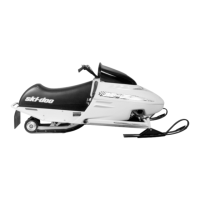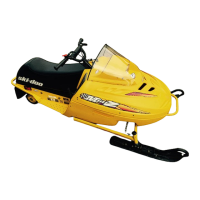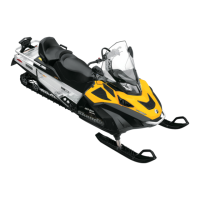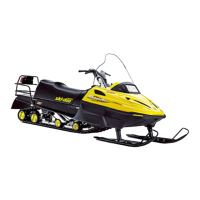SUMMARY OF ACCIDENT PREVENTION
PRACTICES
Snowmobiling at night can be a delightful experience but because
of reduced visibility, be extra cautious. Avoid unfamiliar terrain and
be sure your lights are working. Always carry a flashlight and spare
light bulbs.
Do not leave your keys in the ignition switch, it presents an invita-
tion to thieves and a danger to young children.
Nature is wonderful but don't let it distract your attention from
driving. If you want to truly appreciate winter's scenery, stop your
snowmobile on the side of the trail so that
you don't become a
hazard to others.
Fences represent a very serious threat for both you and your
snowmobile. Give a wide berth to telephone poles or posts.
Hidden wires unseen from a distance can cause serious accidents.
Obtain reflective tape or markings to identify hazardous wires near
your trail.
Overhead branches can cause driver distraction, cut faces and
even cause eye damage. Always wear an approved safety hel-
met, eye protection and a face shield. This also applies to your
passenger.
Smoking while refueling or while checking the fuel level can be
dangerous. All fuel gives off fumes. If you do smoke, do so away
from the snowmobile.
Although the snow on the ground measures several inches and
even feet in depth, dry grasses — in certain areas — may extend
above snow level. Remove any such accumulation from track,
engine and gas tank areas.
Be aware of inherent risks associated with riding off trails, such
as avalanche and other natural or man made hazards or obstacles.
Avoid road traveling. If you must do so and it is permitted, reduce
speed. The snowmobile is not designed to operate or turn on
paving. When crossing a road, make a full stop, then look carefully
in both directions before crossing at a 90 angle. Be wary of parked
vehicles.
_____
SAFETY INFORMATION
_____
23

